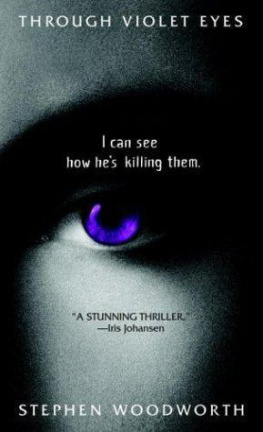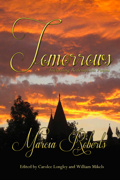Stephen Woodworth - From Black Rooms
Here you can read online Stephen Woodworth - From Black Rooms full text of the book (entire story) in english for free. Download pdf and epub, get meaning, cover and reviews about this ebook. year: 2006, publisher: Bantam, genre: Humor. Description of the work, (preface) as well as reviews are available. Best literature library LitArk.com created for fans of good reading and offers a wide selection of genres:
Romance novel
Science fiction
Adventure
Detective
Science
History
Home and family
Prose
Art
Politics
Computer
Non-fiction
Religion
Business
Children
Humor
Choose a favorite category and find really read worthwhile books. Enjoy immersion in the world of imagination, feel the emotions of the characters or learn something new for yourself, make an fascinating discovery.

- Book:From Black Rooms
- Author:
- Publisher:Bantam
- Genre:
- Year:2006
- Rating:4 / 5
- Favourites:Add to favourites
- Your mark:
- 80
- 1
- 2
- 3
- 4
- 5
From Black Rooms: summary, description and annotation
We offer to read an annotation, description, summary or preface (depends on what the author of the book "From Black Rooms" wrote himself). If you haven't found the necessary information about the book — write in the comments, we will try to find it.
From Black Rooms — read online for free the complete book (whole text) full work
Below is the text of the book, divided by pages. System saving the place of the last page read, allows you to conveniently read the book "From Black Rooms" online for free, without having to search again every time where you left off. Put a bookmark, and you can go to the page where you finished reading at any time.
Font size:
Interval:
Bookmark:

From Black Rooms




Series: Violet Eyes Series [4]
Rating:
Tags: Mystery & Detective, Fiction - Espionage, American Mystery & Suspense Fiction, Science, General, Suspense, Thril er, Lindstrom; Natalie (Fictitious character), Thril ers, Fiction, Physics, Espionage
SUMMARY: Natalie Lindstrom has final y left the underworld behind for a new career in the art world. But theres one world she cant escape: the Other world of the dead. As a former Violet, an elite crime-fighter with the power to channel murder victims, Natalie is now using her paranormal gift to summon the spirits of legendary painters. But shes about to discover how far some people wil go to keep their hold on herand others like her. Evan Markham, her ex-lover-turned-VioletKil er, has escaped from prison. And hes been made an offer he cant refuse: Natalie. But first he must help contact a deceased geneticist whose most intriguing experiment was brutal y interrupted: an attempt to manufacture Violets. To protect her young daughter and herself, Natalie must search for the scientists only living test subjecta handsome but tortured artist to whom she is dangerously attracted. For he is caught in the grip of two opposing forces, one that wants his survival, another that wants himand anyone connected with himdestroyed.
From Black Rooms
Stephen Woodworth
This book is dedicated to the many close friends whose unswerving encouragement and support have sustained me throughout my writing career: David and Diana
Whiting, Amy and David Trotti, David Rickel and
Edward Wheat, Jason Yee,
and so many others.
Most of al , I owe this novel
to the best friend I could ever have,
my wife and col eague, Kel y Dunn.
Disease, insanity and death were the angels whichattended my cradle, and since then have followed methroughout my life. I learned early about the misery anddangers of life, and about the afterlife, about the eternalpunishment which awaited the children of sin in hell.
-- Edvard Munch
TO THE READER
Al of the paintings described in this book are real artworks that were actual y stolen from the places mentioned and in the manner described. As yet, none of them have been returned, and no one knows who has them or where they are...
The Children of Dr. Wax
SELECTED TO KILL HIMSELF, HE cal ed in sick at
work to spend the entire day saying good-bye to his children. He would enjoy their company as he ate his last meal.
With the strains of a Vivaldi violin concerto issuing from the speakers of his home's built-in sound system, Wax uncorked his finest bottle of burgundy and
prepared himself a plate of brie, foie gras, cracked wheat and rye crackers, and fresh grapes. Once the wine had had a chance to breathe, he placed it on a sterlingsilver tray along with the platter of food and a cutcrystal goblet, and carried it from the kitchen to a door in the hal way. Setting the tray on the adjacent
mahogany side table, he punched in a seven-digit
combination on the door's digital keypad, and the carbon-steel bolts slid back into the jamb with the shuck of shel s pumped into a shotgun barrel.
Wax pul ed the door open, revealing the foot-thick depth of insulation and metal behind its wooden facade. The wal s of the basement had been similarly
reinforced. The plaster and drywal hid tungsten-carbide plates and sandwiched layers of concrete, steel, and Sheetrock, making the shelter impervious to fire, dril s, and explosives. The vault had cost his employers at the North American Afterlife Communications Corps a
couple mil ion dol ars to build, but no price was too great to pay for his children's safety.
They glowed in welcome as he descended the cel ar steps with the silver tray. Sensors detected his heat signature and switched on the lamps that il uminated his family. Warm yel ow light bloomed in patches in the darkness of the black-wal ed room. Basking in their individual spotlights, the children smiled at him--as precious to him as if he'd given birth to them himself. Wax had positioned the spots to light each canvas to best effect, precisely calibrating the intensity so as not to fade the colors. Although a blistering New Mexico heat broiled the exterior of the house, climate-control systems kept the cel ar at a constant seventy degrees, with just enough humidity to keep the paintings from cracking.
An office chair and a smal table in the center of the floor provided the chamber's only furnishings. As the vault door automatical y sealed him inside, Wax set the tray on the table, unwound the bread-bag twist-tie he'd used to hold back his hair, and shook out the ponytail until it fel down around his shoulders in a gray mane. Popping a grape in his mouth, he seated himself in the chair, which he could swivel to view the artwork
hanging on any of the cel ar wal s. There, with forced air and piped music swathing him in a cool swirl of Vivaldi strings, he spent his last hour with the only real family he had ever known.
As an only child, Bartholomew Wax had virtual y
grown up among paintings. His divorced mother
couldn't afford a babysitter during summer vacation, so every morning she would drop him off at the Isabel a Stewart Gardner Museum while she went to work the day shift at a Dunkin' Donuts shop in downtown
Boston. Back in the seventies, when parents were stil naive about pedophilia and when day care was
considered a luxury, Bartholomew's mother told herself that it would do the boy good to spend his days
surrounded by high culture rather than at home
watching television.
A withdrawn and frail boy with an autistic's love of routine, little Barty came to cherish his hours in the dim gal eries of the Italian-style palazzo. The docents al knew him by name, and he would eat his sack lunch among the white lilies and Greco-Roman statuary in the peaceful courtyard, alone with his thoughts. But what he loved most were the paintings, each of which
remained exactly where Mrs. Gardner had decreed it should stay forever. Masterpieces of different sizes and themes jammed some wal s so closely that their frames butted against one another, resembling a patchwork of postage stamps on an enormous envelope. Each one
silently whispered its story, and when no one else was in the room, he would talk to each in turn, tel ing them al his secrets and his grand plans for the future. They were his family, after al .
Several members of that family now hung before him in this vault. Munching a cracker spread with brie, Wax basked in the delicate glow of The Concert--one of only thirty-five Vermeers in existence. The artist's muted use of light gave a preternatural tranquil ity to the scene of a seventeenth-century Dutch family
playing musical instruments; Wax could actual y hear the quiet harmony of the clavichord and guitar calming the frenzy of thoughts in his mind.
Next to the Vermeer, Storm on the Sea of Galilee
churned in an endless, frozen tempest. Rembrandt's only seascape, it depicted Jesus' disciples clinging to a sailboat that cresting white water threatened to overturn. Golden sunlight touched the wave-tossed boat as a hole of blue sky opened in the coal-smoke clouds, the
Next pageFont size:
Interval:
Bookmark:
Similar books «From Black Rooms»
Look at similar books to From Black Rooms. We have selected literature similar in name and meaning in the hope of providing readers with more options to find new, interesting, not yet read works.
Discussion, reviews of the book From Black Rooms and just readers' own opinions. Leave your comments, write what you think about the work, its meaning or the main characters. Specify what exactly you liked and what you didn't like, and why you think so.









